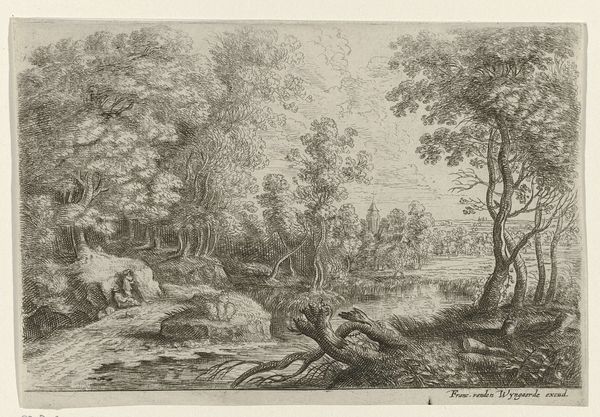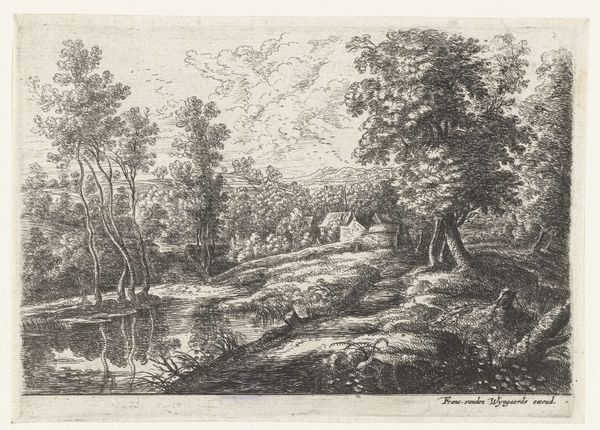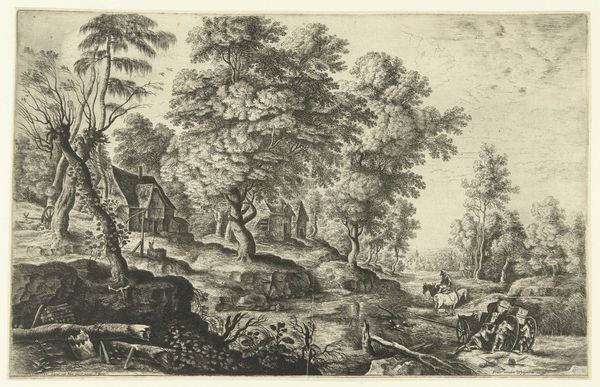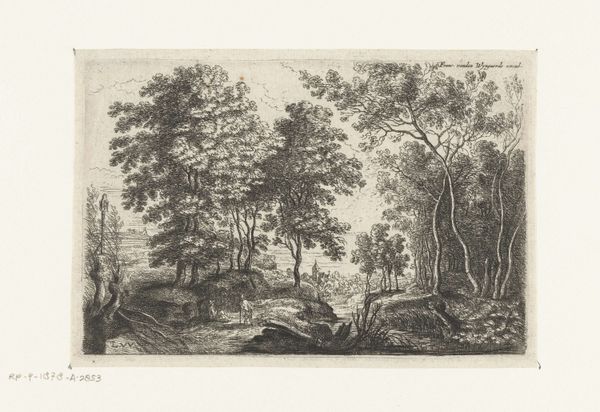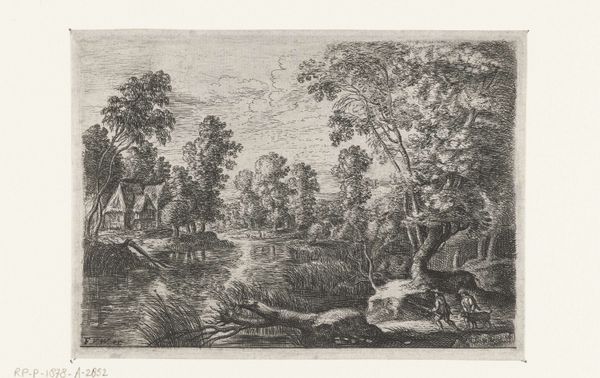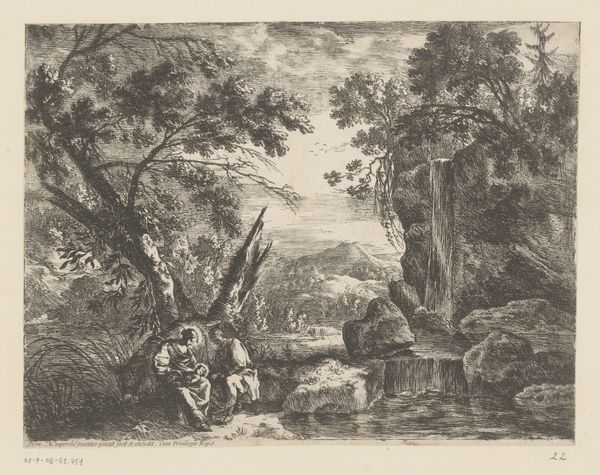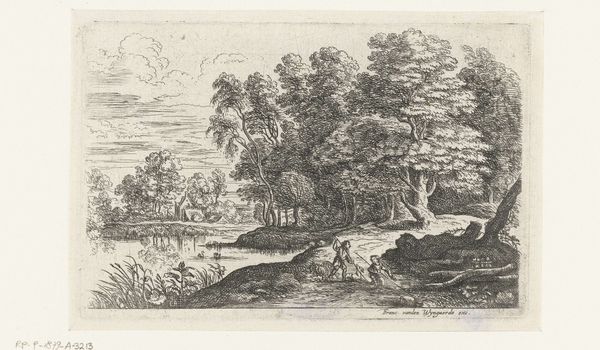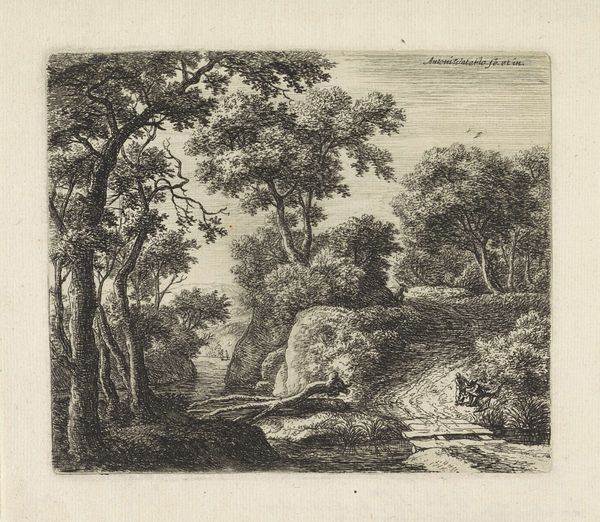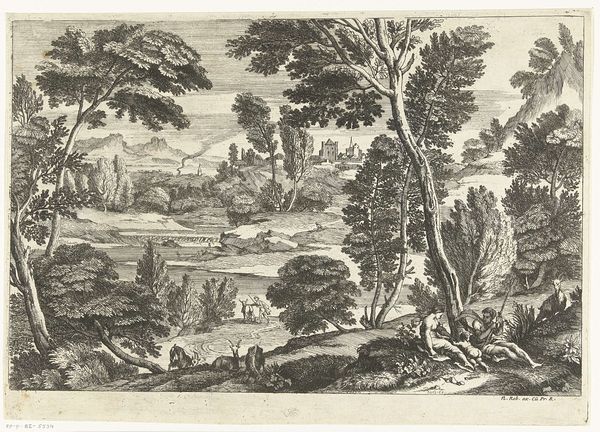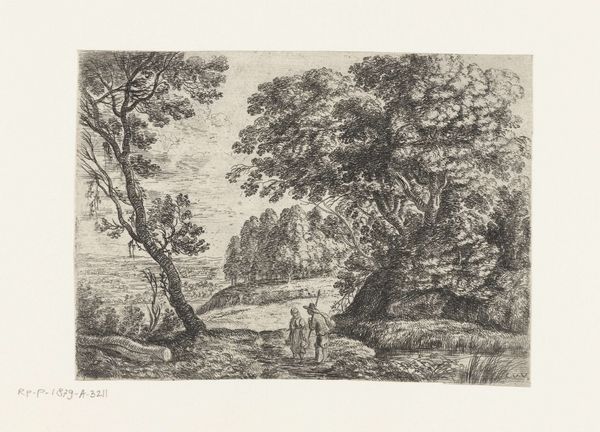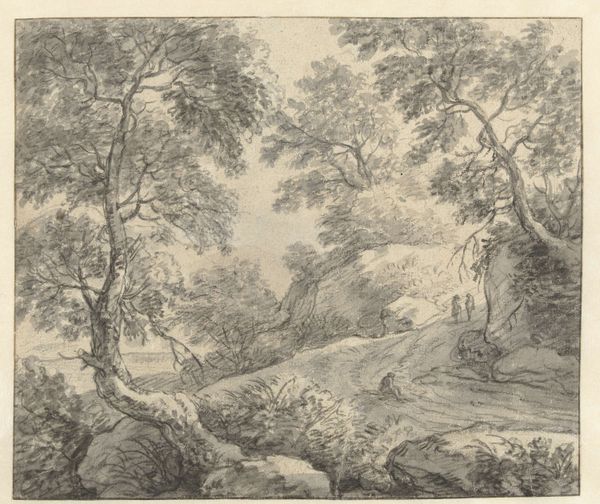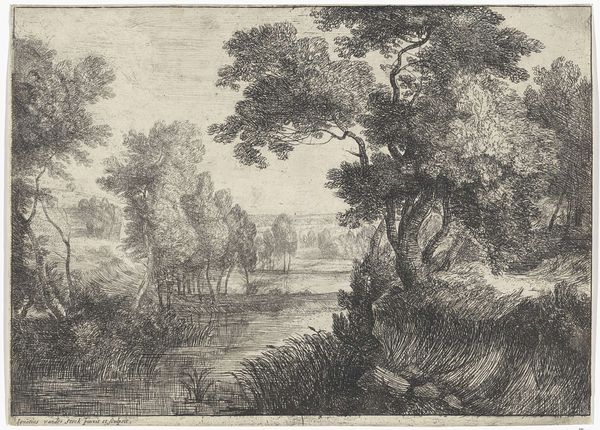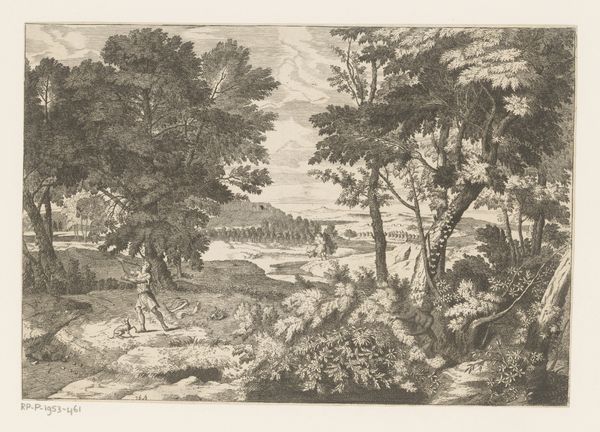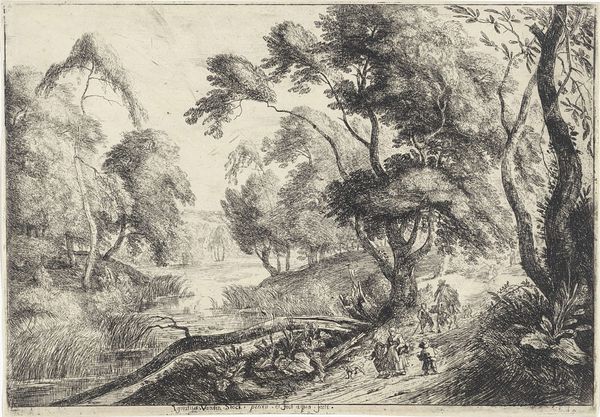
print, etching
#
dutch-golden-age
# print
#
etching
#
landscape
#
realism
Dimensions: height 192 mm, width 276 mm
Copyright: Rijks Museum: Open Domain
Editor: We are looking at "Paarden en koeien bij een drinkplaats", or "Horses and cows by a drinking place," created by Lucas van Uden sometime between 1615 and 1673. It’s an etching, and I’m really drawn to the detail he gets with the natural scene; it’s so vivid. What’s your take on this piece? Curator: The fascinating thing to me is van Uden's deliberate emphasis on the materiality of landscape itself, conveyed through the printmaking process. He chose etching, a technique where the lines are bitten into the plate by acid. This allows for incredibly fine detail but also speaks to the artist’s labour in crafting this vision. What social forces were at play when images of livestock and idealized landscapes were commodities that one could reproduce and collect? Editor: So you're suggesting the print itself, the 'object-ness' of it, is significant, as opposed to the beautiful countryside scene? Curator: Exactly. Think about the labour involved in creating the plate, the printing process. Who owned the land depicted? Who benefited from representing these animals as idyllic? The work becomes less about a simple pastoral scene and more about how wealth and ownership were visualized and consumed in 17th-century Dutch society. The reproduction via printing transforms the image into a commodity itself. Editor: That’s really interesting, I hadn't considered the printmaking itself as being part of the statement of the art. Thank you. Curator: And I’ve perhaps been given a fresh appreciation for the natural beauty, thanks to your initial description!
Comments
No comments
Be the first to comment and join the conversation on the ultimate creative platform.
